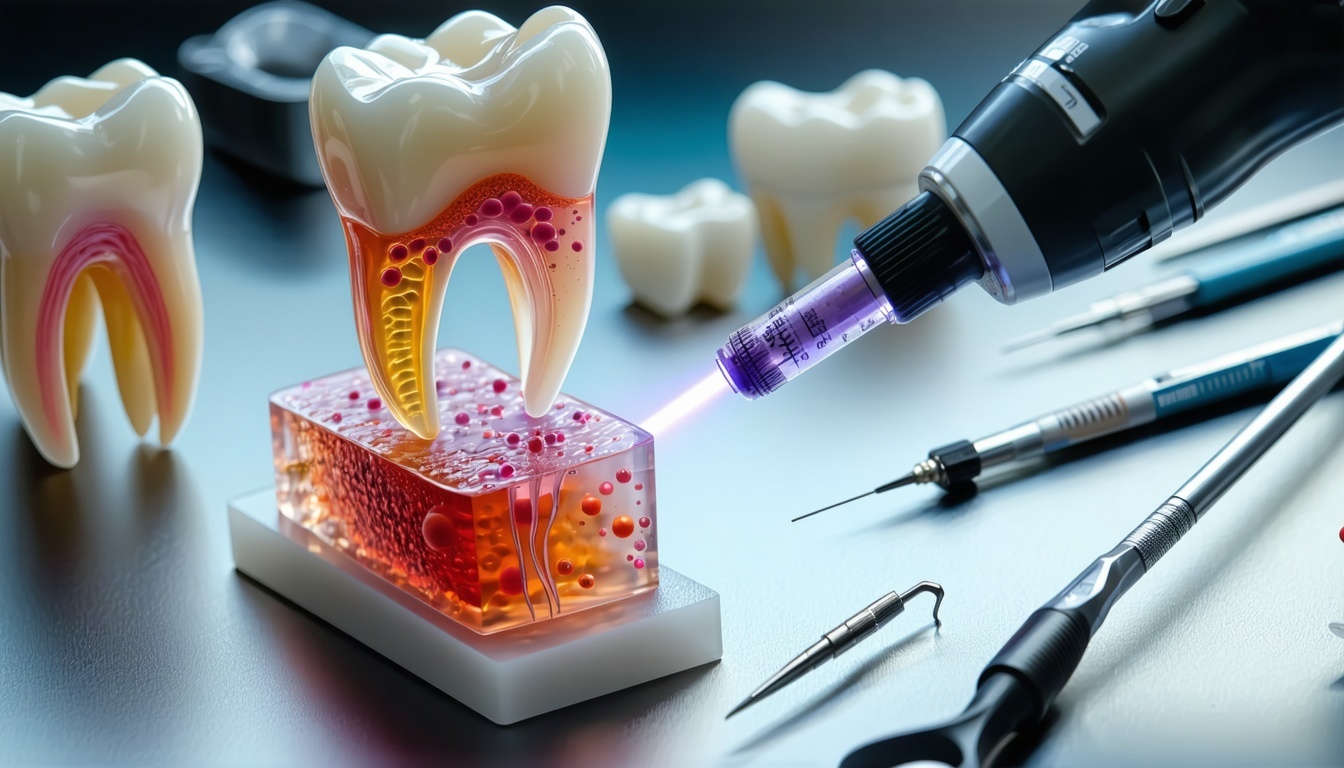Discover how laser-activated irrigation revolutionizes root canal disinfection by effectively removing biofilms.
Authors: De Meyer S, Meire MA, Coenye T, De Moor RJ
Journal: International Endodontic Journal (2017 May)
Objective
The primary objective of this study was to evaluate the effectiveness of laser-activated irrigation (LAI) in removing bacterial biofilms from artificial root canal models. This was compared to more traditional methods like syringe irrigation (SI) and ultrasonically activated irrigation (UAI). The study aimed to determine whether LAI offers significant advantages in biofilm removal, particularly in the context of endodontic treatments where effective disinfection is crucial for patient outcomes.
Materials and Methods
To conduct this study, dual-species biofilms consisting of Enterococcus faecalis and Streptococcus mutans were grown for 48 hours within resin-based artificial root canals.
Three distinct irrigation protocols were then tested:
Tests were performed with both sterile saline as well as NaOCl (2.5%) as the irrigant. Surviving bacteria were harvested and the number of CFU was determined by plate counting and compared across groups (anova, P0.05).
The effectiveness of each method was measured by quantifying the remaining viable bacteria post-irrigation, providing a clear comparison of the bacterial reduction achieved by each technique.
Key Results
- With saline:
- LAI achieved >1 log10 reduction in bacterial counts, significantly higher than UAI (0.52 log10) and SI (<0.25 log10).
- With NaOCl:
- All methods resulted in >2.2 log10 reduction, with no significant differences between groups.
Conclusion
Within the limitations of this in vitro set-up, laser-activated irrigation removed more biofilm than ultrasonically activated irrigation when using saline as the irrigant, indicating greater physical biofilm removal.
ACCESS THE FULL ARTICLE HERE

